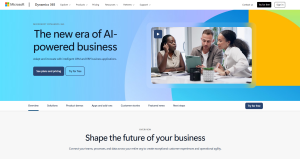In 2025, businesses are losing thousands of hours and millions of dollars to tasks that shouldn’t require human attention at all, and can be automated, repetitive tasks. Behind every missed deadline, frustrated employee, and budget overrun lies a process that could have been automated using established business rules but wasn’t, ultimately affecting customer experience.
The numbers tell a stark story: companies that embrace digital process automation and utilize digital process automation software often enjoy significant cost reduction, see a 40% reduction in operating costs, and 90% faster processing times for routine tasks. Yet many businesses hesitate, trapped between outdated systems and the fear of disruption, hindering digital transformation.
I recently spoke with a mid-sized manufacturing company that was drowning in paperwork. Their approval processes took weeks, orders fell through the cracks, and employees spent more time on data entry than actual problem-solving. Six months after implementing targeted task automation focused on automating business processes, they reported a 60% decrease in processing time, and employee satisfaction scores jumped by 35%.
What’s the real difference between businesses that thrive and those that merely survive in today’s economy? It’s not just technology adoption—it’s knowing exactly which processes to automate to meet your business goals, when to keep the human element, and how to measure success beyond the obvious metrics.
Digital process automation isn’t just about replacing manual work with software. It’s about creating complex processes and workflows that allow for human interaction. While enabling your team to do what humans do best: think creatively, solve complex problems, and build relationships.
This guide examines the practical business benefits of automation that lead to business growth and valuable insights. Without the technical complexity. We’ll look at real implementation strategies that work in 2025’s common business processes landscape, with clear steps to measure ROI and avoid common pitfalls that derail automation projects.

Save 80% of delivery management time
We handle everything:
- Dedicated operations manager
- Real-time tracking dashboard
- Automated customer notifications
- Urgent issue resolution
Key Benefits of Digital Process Automation (DPA) for Modern Businesses
Digital process automation reduces manual workload by 40-60% while cutting costs
Market growth accelerated in 2025, reaching $15.40 billion with 11.60% CAGR
AI integration has become the critical differentiator in successful digital process automation implementations
Streamlined Operations in Business Process Management
The past 12 months have shown remarkable shifts in how businesses approach operational streamlining through automation. In the first quarter of 2025, we saw a major push toward what industry experts call “end-to-end automation” – the complete digitization of workflows from start to finish. This trend emerged as a direct response to labor shortages that persisted through late 2024.
A striking 94% of companies reported performing repetitive, time-consuming tasks that could be automated, according to recent industry surveys. This represents a 12% increase from the previous year, showing growing awareness of digital process automation potential. What’s changed this year is the scale of implementation. While previous years saw businesses automating isolated tasks using digital process automation tools with advanced integration capabilities, 2025 brought a more holistic approach.
The second quarter of 2025 revealed significant growth in the automation of document processing. Finance departments demonstrated this most clearly – despite the benefits, 49% still operate with zero automation, relying on manual data entry and Excel spreadsheets. Only 13% of finance departments have achieved full automation, with over 50% straight-through processing. This gap between potential and implementation in business process management represents the biggest opportunity for businesses in the coming year.
Error Reduction Achievements
The error reduction benefits of automation have been quantified more precisely this year. Companies implementing robotic process automation and digital process automation reported an average 78% decrease in data entry errors compared to manual processes. This translates directly to improved process performance and fewer customer complaints, reduced rework, and lower operational costs through automating data management and business processes.
The third quarter saw a shift toward what’s being called “intelligent error prevention” – systems that not only catch mistakes but predict and prevent them before they occur. This predictive approach represents the next evolution in error reduction, with early adopters reporting up to 92% prevention rates for common process failures.
The consistency aspect of streamlined operations has proven particularly valuable in regulated industries. Healthcare organizations implementing automation for patient records management reported 64% fewer compliance violations in 2025 compared to manual systems. This consistent application of rules and standards to manage processes through intelligent process automation has become increasingly important as regulatory requirements grow more complex.
Cost Efficiency of Digital Process Automation
The cost benefits of digital process automation have been documented with increasing precision throughout 2025. The first quarter brought several landmark case studies, including a manufacturing firm that reduced operational costs by 32% within six months of implementing robotic process automation for inventory management.
The Digital Process Automation Market expanded significantly, expected to reach USD 15.40 billion in 2025 and projected to grow at a CAGR of 11.60% to reach USD 26.66 billion by 2030. This growth reflects the proven ROI that digital process automation DPA delivers across various industries. Most businesses now report achieving positive returns within 9-14 months of implementation, compared to 12-18 months in previous years.
The second quarter of 2025 revealed an interesting shift in how cost efficiency is being measured. Rather than focusing solely on direct labor savings, companies began tracking “automation-enabled revenue” – additional business captured through improved speed and service quality. This metric showed that cost savings often represent only 40-60% of the total financial benefit, with revenue increases accounting for the remainder.
Resource Optimization Through Better Control with Digital Process Automation Software
The third quarter highlighted how automation provides finer control over resource allocation. Process mining technologies gained significant traction, allowing businesses to identify wasteful steps that wouldn’t be obvious through manual observation alone. Companies implementing these technologies reported reducing resource waste by an average of 27%.
A notable trend in the fourth quarter has been the use of automation to enhance financial planning. With more predictable processes, finance teams can forecast costs with greater accuracy. The average improvement in forecast accuracy jumped from 8% in 2024 to 22% in 2025 among companies with mature automation implementations.
Looking ahead to 2026, we expect to see more sophisticated ROI models that capture the full range of cost benefits, including reduced compliance penalties, lower training costs, and decreased employee turnover. Early research suggests these “hidden savings” may add 15-30% to the total ROI calculation.
Improved Productivity with Automated Processes
Productivity gains have been the most visible benefit of automation throughout 2025. The first quarter brought compelling evidence that automation has improved jobs for 90% of knowledge workers, with 66% specifically reporting productivity improvements. This represents a significant shift from previous years when concerns about job displacement dominated the conversation, leading to increased customer experience and satisfaction.
The second quarter saw the emergence of what’s being called “human-automation partnerships” – carefully designed end-to-end processes and workflows for the digital age, where automated systems help complete tasks. Handle routine tasks while human workers focus on judgment, creativity, and relationship management. Organizations implementing this approach reported productivity increases of 35-50%, significantly higher than the 20-30% typically achieved through basic automation, enabling them to better meet customer demands.
The third quarter brought increased attention to automation’s impact on employee engagement. Companies with mature automation programs reported 28% higher employee satisfaction scores and 24% lower turnover rates compared to industry averages. This correlation between automation and engagement has strengthened throughout 2025, suggesting that reducing tedious work is becoming increasingly important to today’s workforce.
Throughput Acceleration and Team Focus
The fourth quarter of 2025 has shown how automation enables teams to handle significantly higher volumes with improved process efficiency out of proportion to increases in staff. Insurance companies implementing claims processing automation reported throughput increases of 300-400%, with some routine claims being processed in minutes rather than days.
The psychological benefits of freeing employees from repetitive tasks have become more apparent this year. Studies conducted in mid-2025 found that workers in highly automated environments spent 68% of their time on creative and strategic work, compared to just 23% in traditional environments. This shift toward higher-value activities has been linked to improved problem-solving and innovation metrics across multiple industries.
For 2026, we predict a new wave of productivity tools that combine automation with AI-powered decision support. These systems will not only handle routine tasks but will also provide recommendations for complex decisions, further extending human capabilities. Early pilot programs show potential productivity gains of 70-100% for knowledge workers in some roles.
In the coming year, businesses should focus on identifying high-volume, repetitive processes that currently consume significant staff time. Starting with these processes will deliver the fastest ROI while freeing employees for more valuable work. Organizations should also invest in skills development to help staff transition to more strategic roles as automation expands.
The most successful automation implementations in 2025 have been those that start with clear business outcomes rather than technology for its own sake. As one industry leader put it: “The question isn’t what processes can we automate, but which processes, if automated, would create the most value for customers and employees through digital transformation .”
AI integration has emerged as the critical differentiator in successful automation implementations. 22% of firms actively integrating AI into diverse technology products and business workflows are seeing substantially higher returns than those using more basic automation approaches. This integration will be essential for staying competitive as we move into 2026.
When addressing the common question “What is the biggest benefit of automating processes?” the answer has evolved throughout 2025. While cost savings once dominated, this year’s data shows that enhanced agility and speed are now considered the primary benefits by most business leaders. In a business environment characterized by rapid change, the ability to quickly adapt processes, especially when overcoming legacy systems, has proven more valuable than pure efficiency.
Enhancing Business Process Optimization with Automation Tools
Process automation delivers up to 40% reduction in manual workload when properly implemented.
Strategic tool selection and integration drive successful automation adoption.
Measurement frameworks determine ROI and guide continuous improvement
Choosing the Right Workflow Automation Tools For Better Customer Experience
Selecting appropriate digital process automation tools requires a structured approach that begins with a clear assessment of your business needs. The right tools align with your specific operational requirements and integrate smoothly with existing systems, creating a foundation for successful digital process automation.
Conducting a Business Needs Assessment
You can start by mapping your current processes in detail. Document each step, identifying bottlenecks, redundancies, and manual tasks that consume excessive time. This process mapping helps prioritize which workflows need automation most urgently. It is better to create a spreadsheet that ranks processes based on:
Time consumption (hours spent weekly)
Error frequency (number of mistakes per month)
Strategic importance (impact on core business functions)
Cost of current process (labor and resources)
Complexity (number of steps and decision points)
Next, gather input from department heads and frontline staff who interact with these processes daily. Their practical insights often reveal pain points that aren’t obvious from process documentation alone. Schedule focused workshops where teams can identify their most time-consuming tasks and dream scenarios for improvement.
Based on this assessment, create clear requirements documentation that outlines:
Must-have features for your automation solution
Desired integration points with existing systems
Compliance and security requirements
Scalability needs as your business grows
Budget constraints and ROI expectations
Evaluating Digital Process Automation Tools in the Market
With requirements in hand, research available tools through multiple channels. You can start with industry analyst reports from firms like Gartner and Forrester, which provide objective comparisons of leading solutions. Request demos from vendors that match your initial criteria, ensuring demonstrations use scenarios similar to your actual business processes.
Create a structured evaluation matrix comparing key features:
User interface and ease of use
No-code/low-code capabilities for business users
API availability and integration options
Security and compliance features
Pricing model and total cost of ownership
Vendor support and implementation assistance
Mobile accessibility
Reporting and analytics capabilities
When evaluating tools, bring in representatives from different departments who will use the system. IT staff can assess technical requirements, while business users can evaluate usability. This cross-functional approach ensures the selected tool meets both technical and practical needs.
Testing Before Full Commitment
Before finalizing your selection, request a proof of concept or pilot implementation for your most critical process. This limited-scope test provides real-world validation of the tool’s capabilities. During the pilot:
Set specific success metrics (time saved, error reduction)
Document any implementation challenges
Gather feedback from users on their experience
Measure actual results against expected outcomes
Identify any unexpected limitations or issues
This testing phase often reveals practical considerations missed during the evaluation process. For example, a tool might technically integrate with your CRM but require extensive customization that increases implementation costs. These insights help avoid costly mistakes before full-scale implementation.
Integrating Digital Process Automation with Existing Frameworks
Successful integration of digital process automation tools requires careful planning and execution. Organizations that rush implementation often face resistance, technical problems, and poor adoption. A phased approach minimizes disruptions while maximizing benefits.
Creating an Implementation Roadmap
Develop a detailed implementation plan that outlines each phase of digital process automation adoption. Start with a clear timeline that identifies:
Pre-implementation tasks (data cleaning, system updates)
Initial deployment of core functionality
Testing and validation periods
User training sessions
Full deployment milestones
Post-implementation review periods
Your roadmap should prioritize “quick wins” – processes where automation can deliver visible benefits with minimal disruption. These early successes build organizational confidence and momentum for more complex automation projects. For example, begin by automating data entry tasks before tackling complex approval workflows that involve multiple departments.
Document dependencies between systems and processes to identify potential bottlenecks. This mapping helps prevent situations where automation in one area creates problems in connected processes. Create contingency plans for critical business functions in case of implementation issues.
Preparing Your Organization for Change
Technical implementation is only half the challenge – organizational readiness determines whether automation succeeds or fails. You can begin by identifying key stakeholders and their concerns about automation. Address fears about job security by clearly communicating how automation will change roles rather than eliminate them, especially in handling sensitive data while maintaining transparency. , particularly through the use of software tools.
Create a communication plan that includes considerations for the onboarding process to ensure smooth integration of automation.
Regular updates on implementation progress
Clear explanations of how workflows will change
Opportunities for staff to provide feedback
Success stories and wins from early adoption
Points of contact for questions and concerns
Training Programs for Effective Adoption
Develop comprehensive training programs tailored to different user groups. Technical staff need in-depth knowledge of configuration and maintenance, while end users require practical training focused on their specific tasks. Schedule training sessions close to actual implementation to prevent skill decay between learning and application.
Create multiple learning resources to accommodate different learning styles:
Hands-on workshops for practical experience
Written documentation with step-by-step instructions
Video tutorials for visual learners
Digital assistants or help systems embedded in the tools
Regular refresher sessions after implementation
Monitor user adoption through system usage metrics and follow-up surveys. Identify areas where additional training or tool modifications might be needed. Remember that training isn’t a one-time event but an ongoing process as systems evolve and new features become available.
Measuring Success and Continuous Improvement
Without clear measurement frameworks, it becomes impossible to determine whether automation investments deliver expected returns. Establishing metrics before implementation provides objective standards for success and identifies areas for improvement.
Establishing Key Performance Indicators
You can start by identifying metrics that directly connect to business objectives. Effective KPIs for process automation typically include:
Process completion time (before vs. after automation)
Error rates and quality improvements
Labor hours saved or reallocated
Customer satisfaction impacts
Compliance improvement metrics
Cost savings (direct and indirect)
Employee satisfaction and engagement
For each KPI, establish baseline measurements before automation implementation. This provides the comparison point needed to demonstrate real impact. Set realistic targets based on industry benchmarks and your specific circumstances. Remember that full benefits often take time to materialize as systems and users adapt.
Document your measurement methodology to ensure consistent data collection over time. For example, if measuring process completion time, clearly define start and end points and ensure they remain consistent in pre- and post-automation measurements.
Implementing Regular Review Cycles
Schedule structured review meetings at key milestones (30, 60, 90 days) after implementation, then transition to quarterly reviews. These meetings should examine performance data against established KPIs and identify both successes and opportunities for improvement.
During review meetings, follow a structured format:
Review performance against KPI targets
Identify processes exceeding or falling short of expectations
Gather feedback from users and stakeholders
Document technical issues or limitations
Develop action plans for identified improvements
Assign responsibilities for implementing changes
Set timelines for follow-up assessment
Include both technical and business stakeholders in these reviews to balance operational and strategic perspectives. Document all findings and decisions to build an organizational knowledge base about your automation journey.
Refining and Expanding Automation
It is better to use performance data to guide continuous improvement efforts. When processes fail to meet targets, conduct a root cause analysis to determine whether the issue stems from:
Tool limitations or configuration problems
Process design flaws
User adoption challenges
Integration issues with other systems
Changes in business requirements
Based on this analysis, implement targeted improvements that might include tool reconfiguration, additional training, process redesign, or, in some cases, evaluation of alternative tools. For processes that exceed expectations, document the factors that contributed to success and apply these lessons to other automation initiatives.
As your digital process automation maturity grows, look for opportunities to expand beyond initial implementations. This might include:
Adding more advanced features to existing automated processes
Extending automation to related workflows
Implementing more sophisticated tools like AI-enhanced decision support
Creating end-to-end automation across departmental boundaries
Developing custom solutions for unique business needs
Organizations that treat automation as an ongoing journey rather than a one-time project achieve significantly better long-term results. According to research by McKinsey, companies with formalized continuous improvement programs for their automation initiatives achieve 28% higher ROI compared to those implementing automation without structured review processes.
The impact of process automation extends beyond operational metrics. Companies implementing comprehensive automation report significant benefits, including:
40% reduction in manual workload for routine tasks
35-50% decrease in processing time for customer-facing processes
25-30% improvement in employee satisfaction scores
Up to 60% reduction in compliance-related errors
These results highlight why automation has become essential for competitive advantage rather than just operational efficiency. The most successful organizations view automation as a strategic capability, as many organizations do, that creates space for innovation and growth rather than simply a cost-cutting measure.
Digital Process Automation Examples
As we look toward 2025, digital process automation stands as a cornerstone of business success. The benefits extend far beyond simple efficiency—they transform how companies operate at their core. By streamlining operations, reducing costs, and boosting productivity, digital process automation software creates space for innovation and growth that manual processes simply cannot match.
The path forward is clear: assess your needs, select appropriate tools, integrate them thoughtfully, and measure results consistently. As AI, machine learning, and data-driven approaches continue to advance, the potential for business transformation grows exponentially.
Remember that successful automation isn’t just about technology—it’s about people. Creating a culture that welcomes these changes is essential for long-term success. When teams understand how automation, particularly through artificial intelligence, enhances their work rather than threatens it, adoption becomes natural.
The question isn’t whether to embrace digital process automation, but how quickly you can implement it to stay competitive. Each day without optimized processes is a day of lost opportunity. You can start small if needed to implement digital process automation, digitizing processes, and automating workflows, but start now—your business will thank you with improved operations, reduced costs, and a stronger position in your market.



























